2022 Honor Society inductees
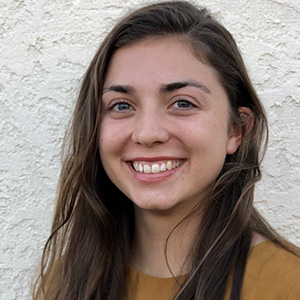
Emily Adis
- University of Tampa
Adis recently graduated from the University of Tampa with a major in biochemistry and a minor in Spanish. Her interest in understanding the dysfunction of the human body prompted her to pursue an education in biochemistry, and after conducting research on the Acropora palmata coral reef G protein in Scott Witherow’s laboratory, she realized how integral research is in the scientific discovery process. After her cloning research and investigations in murine ocular metabolism during the West Virginia University Summer Undergraduate Vision Research Fellowship Program, her career goals are to improve people’s quality of life through improving their vision. Adis has been an active member of the UT ASBMB Student Chapter for four years and served as treasurer for one year. She has represented the UT chapter through her outreach, sharing science with younger generations at the Tampa Preparatory and RiverRun Montessori schools. After graduation, she plans to continue her education in ocular sciences and one day propel the field of blindness treatment in research and clinical settings as a scientist–ophthalmologist. In her free time, Adis loves rock climbing and exploring beautiful national parks.
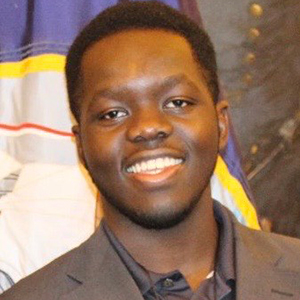
Christopher Baidoo
- St. Mary's College of Maryland
Ever since he was a child, Baidoo has liked learning about the world around him, whether it was from throwing ice cubes into the fireplace or taking care of tadpoles in preschool. He knew he wanted to pursue science after visiting his father’s work and seeing him help people at the pharmacy. Both his parents work in medicine and show respect and care toward everyone they meet. Baidoo wants to be able to show that same care and respect to his future patients. His research is an in vitro study into chelator optimization; he determines the binding rates of cadmium and zinc ions to metallothionein 4-(2-pyridylazo) resorcinol and ethylenediaminetetraacetic acid under physiological conditions. He is involved in the Biomolecular Organization of St. Mary’s Students, and he recently has taken up cooking. After he graduates, he wants to take a gap semester and gather all the experience he can before going into medical school.
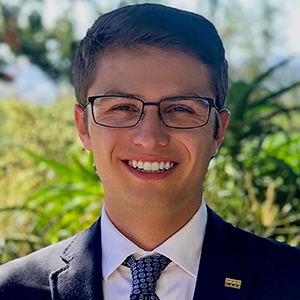
Alexander Blatt
- University of San Diego
Blatt recently graduated from the University of San Diego, majoring in biochemistry with a minor in finance. Since he was in middle school, he’s had a passion and curiosity for science. Doing undergraduate research cemented his desire to pursue a career in science and exploration. He did research first in Peter Iovine's polymer organic synthesis lab and then in Joseph Provost’s biochemistry and molecular biology laboratory at the University of San Diego. His project was investigating the metabolic protein–protein interaction and regulation between malate dehydrogenase and citrate synthase within the Krebs cycle. Beyond his involvement within the sciences, Blatt participated in several extracurricular activities on campus, such as being a member of the ultimate Frisbee team and executive vice president of the Zeta Upsilon chapter of the Phi Chi Theta professional business fraternity and getting his open-water scuba diving certification. He aims to pursue research and development in the biochemistry industry to be at the forefront of biomedical research. First, he plans to attend Vanderbilt University to obtain a Ph.D. in biochemistry. He has been playing the piano for 18 years, especially classical and jazz piano. Being part of USD’s ASBMB Student Chapter has helped strengthen his leadership skills and has connected him to the local science community, where he has formed lifelong friendships.
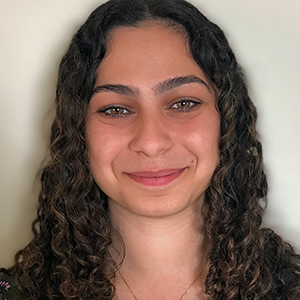
Natalie Botros
- University of San Diego
Growing up, Botros always enjoyed science — she was fascinated by brain-teasing puzzles, rocks, bugs, plants and the functions of the human body. She knew she wanted to pursue her love for science in some form. In college, she became heavily involved with research within the biochemistry department. Plasmodium falciparum, the most severe human malarial parasite, causes approximately 228 million reported malarial infections and 450,000 reported deaths worldwide each year. Botros’ undergraduate research sought to exploit the differences between Plasmodium falciparum malate dehydrogenase and human cytosolic and mitochondrial MDH to bind a ligand allosterically and create a drug that disrupts the overall function of plasmodium falciparum MDH without harming the human cytosolic and mitochondrial malate dehydrogenases. Her passion lies in medicine and promoting the health and well-being of others. She wants to become an infectious disease physician; this area of study will allow her to help people suffering from diseases and care for them not only in America but around the world, regardless of socioeconomic status. Being a part of the ASBMB Student Chapter at USD allowed her to meet, collaborate and learn from wonderful scientists who continue to inspire her and fuel her passion for science.
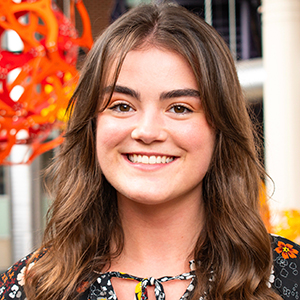
Anna Crysler
- University of Pennsylvania
Anna Crysler holds a B.A. in biochemistry from Albion College and is a is a Ph.D. student in bioengineering at the University of Pennsylvania. She is an ASBMB Today volunteer contributor.
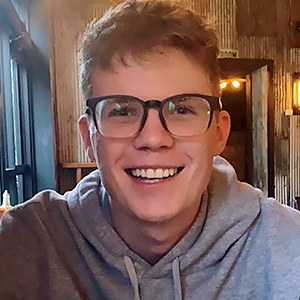
Jack Dowling
- Ohio State University
Dowling’s interest in science started at an early age when his grandfather passed down an old slide monocular microscope. Most of the slides were empty, so he would find grass, roots, bugs — anything that could be viewed in fine detail under the microscope. Exploration of biology and the process of evolution fueled his early interest in science, particularly in the development of biological systems. This interest progressed toward his undergraduate studies in biochemistry and molecular genetics. In his sophomore year, he joined Adriana Forero’s lab in the microbiology and immunology department, characterizing innate immune pathways that induce interferon expression. In the past year, he started the ASBMB Student Chapter at OSU, addressing the lack of resources for students devoted to graduate school following undergrad. The ASBMB provided an opportunity to meet other students interested in research and network with well-established scientists in a variety of fields. Outside of school, he is a member of Theta Chi Fraternity and works as a general chemistry teaching assistant. Following graduation, he plans to take a gap year and apply to umbrella graduate programs in December. He hopes to transition from innate immunity toward virology and vaccine development.
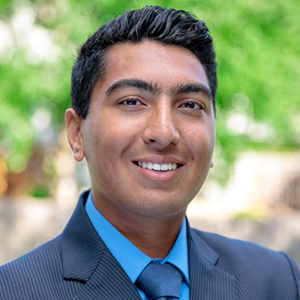
Ronit Gandhi
- University of Nebraska–Lincoln
Gandhi is a biochemistry and mathematics student who started research in the summer before his freshman year, working in the biochemistry department at the UN Medical Center. He then worked for a year in a structural biology lab at UNL followed by a two-year National Institutes of Health research fellowship called Idea Networks of Biomedical Research Excellence. Through this program, he joined a pancreatic cancer lab in the internal medicine department at UNMC before returning to UNL to join a computational biochemistry lab. Throughout his time in college, he also did research on the teaching of data rights in school, and he worked on mathematical biology research projects that he presented at multiple conferences. After graduating, he plans to earn an M.D./Ph.D. dual degree. His hobbies include watch repair and participating in math competitions.
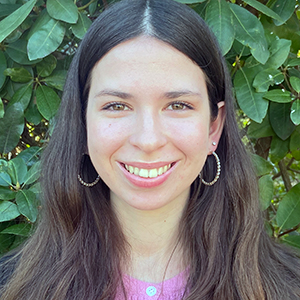
Isabella Gibaldi
- Wesleyan University
Gibaldi does research in the Rich Olson lab at Wesleyan, studying Vibrio cholerae proteins involved in biofilm production, maintenance and dispersal. She has created different constructs of biofilm proteins in order to optimize their production in E. coli expression systems. This allows the proteins to be used for further experimentation, such as biochemical assays to determine binding partners of the protein. On campus, she was a cellist in the Wesleyan University Orchestra and a teaching assistant for French courses. She also worked as an emergency medical technician in a nearby Connecticut town. In the future, she hopes to work as a primary care physician with a focus on individualized care. In her free time, she loves to crochet, go for hikes and play cello.
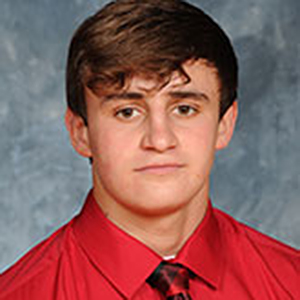
Dylan Gray
- Otterbein University
Gray became interested in science early in high school. He’s a longtime wrestler, and that sport made him want to understand anatomy, bodily function and overall health. He is involved in characterizing transposon mutants in Streptomyces coelicolor. His lab is attempting to identify new growth and development or secondary metabolite production genes using transposon mutagenesis techniques. His goal with this research is to gain experience in an unfamiliar field to broaden his educational range. After graduation, he plans to earn a master’s degree in a program such as medical sciences and then attend medical school. He plans to study sports medicine and potentially osteopathic surgery in medical school. His hobbies include riding motorcycles, fishing, golfing and working out.
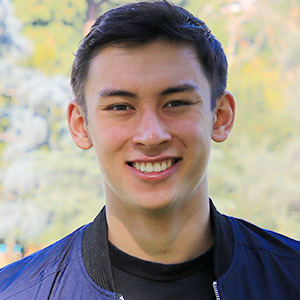
Jeff Haegelin
- Wesleyan University
Haegelin became interested in science at the age of 8 when he toured the California Science Center in Los Angeles. He now is involved in clinical research at Children’s Hospital Los Angeles for RECOVER, a National Institutes of Health research initiative studying potential consequences of the Sars-CoV-2 virus, including long COVID-19. On campus, he was a member of the varsity men’s swimming and diving team and president of the ASBMB Student Chapter and participated in the Student Athlete Support Network. He aspires to study and publish research on the molecular and immunological basis of cancer, to delve deeper into the field of cell profiling through various omic quantification methods, and to collaborate with top-level scientists around the world. He plans to pursue an M.D./Ph.D. to accomplish these goals and hopes to earn a Ph.D. in oncology, biochemistry or immunology. His hobbies include being a DJ, weightlifting, swimming and reading scientific literature. By participating in the ASBMB Student Chapter, he has had phenomenal conversations about various scientific disciplines with peers, professors and visiting scholars from other universities and industries, all of which have shaped his perspective and worldview.
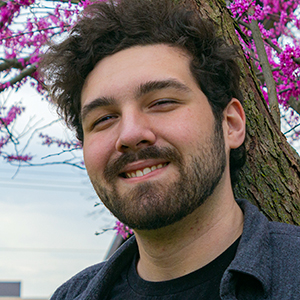
Colin Hemme
- Purdue University
Hemme originally planned to attend vet school but joined the biochemistry department at Purdue to learn the complexities of biochemical mechanisms and now hopes to pursue a Ph.D. in biochemistry. He currently is doing research on the stability of acyl-CoA thioesters in crystallography conditions. He also has spent time in college promoting scientific communication and outreach through the Purdue Biochemistry Club. Outside of science, he writes symphonic music compositions, plays tabletop role-playing games such as Dungeons and Dragons, and prints and paints 3D miniatures. Hemme plans to enroll in the Integrated Program in Biochemistry at the University of Wisconsin–Madison, pursing a Ph.D. that will allow him to work in the academic field, where he can continue promoting scientific learning and doing research. The ASBMB not only has exposed him to all types of biochemical research but also has helped to promote all of the work of the Purdue Biochemistry Club.
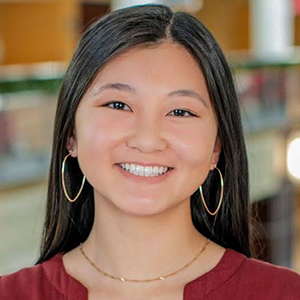
Jocelyn Hsu
- Ohio State University
Hsu recently graduated as a biochemistry major at Ohio State with an interest in youth empowerment and cancer biology. She will be attending the University of Chicago for her Ph.D. in cancer biology to become a professor and researcher. Her interest in research originated when she discovered forensic science but quickly developed into a love for cancer biology after she began research at her university and working with families impacted by cancer. She has been working to identify biomarkers of drug resistance in sarcoma and hopes to continue investigating the genetic mechanisms of cancer metastasis and drug resistance. Her passion for science outreach and education also have opened her eyes to careers in science museum curating and educational programming or in higher education and administration. Hsu has worked with children at Kesem, conducted science experiments with elementary students, tutored high school students and worked with college students as a general chemistry teaching associate. She has served on multiple student boards at OSU including the Residence Halls Advisory Council, the Society of Asian Scientists and Engineers, and the College of Arts and Sciences Student Council. Hsu was one of the first members of the ASBMB Student Chapter at OSU. In her free time, she enjoys trying new foods, playing the flute in Ohio State’s Athletic Band, crocheting and spending time with her friends and family.
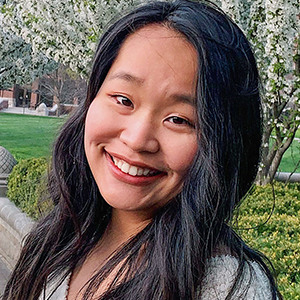
Rina Jia Jiang
- Purdue University
Jiang became interested in science in high school and thanks her high school biology teacher for his wisdom and support for hands-on science education activities that helped her excel at the collegiate level. Her research in Philip Low’s lab focused on targeted therapeutics that aim to reprogram macrophage phenotypes in therapy of idiopathic pulmonary fibrosis. She was involved with the Barbara Cook Chapter of Mortar Board and served as outreach chair of the Purdue Biochemistry Club. She will attend medical school this fall. In her free time, Jiang enjoys traveling, painting and playing soccer. Spending the past three years reframing the priorities of the Purdue-ASBMB outreach program has helped her realize her potential to promote real change and has enhanced her dedication to being of service to others wherever she goes.
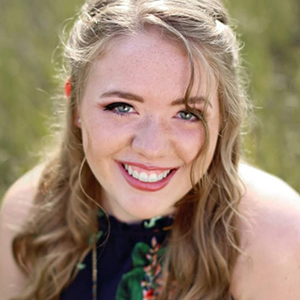
Camden Jones
- University of Nebraska–Lincoln
Jones is a rising senior biochemistry major on the pre-med track at UNL. She has been involved in research with Limei Zhang and is working on a project relating to characterizing monomeric transcription factors and their potential roles in Mycobacterium tuberculosis. Jones is in the honors program at UNL and has participated as a club leader to inspire local children to get involved and excited in the science fields. She is also an active biochemistry ambassador participating in many student outreach programs. After graduating in May 2023, Jones plans to take a gap year and then attend medical school. In her free time, she enjoys listening to music and making playlists for any mood or occasion.
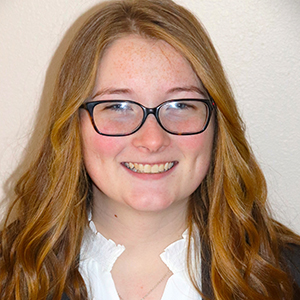
Sarah Jordan
- Grand View University
Jordan recently graduated with a double major in biochemistry and biology. Her interest in science started in middle school, where her teacher had such a passion for the subject that Jordan wanted to learn everything there was to know about how life worked. She has worked on research pertaining to the enzyme PETase, which can break down polyethylene terephthalate; she and her partner sought evidence of its activity and tried to improve the function for more practical use by testing mutants available to their lab. Jordan was active in GV United, a student leadership organization dedicated to keeping alumni and students connected through events on campus. She plans to enter the University of Iowa biochemistry and molecular biology Ph.D. program in the fall. She was a member of the GVU shooting team and enjoys hunting, trap shooting and being outdoors with her boyfriend. The ASBMB Student Chapter helped build a community in GVU science programs, especially within biochemistry majors, and Jordan built long-term relationships with people who supported her through her time at Grand View University.
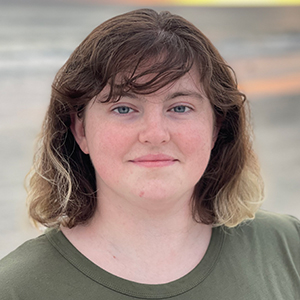
Emily Kassing
- University of Nebraska–Lincoln
Kassing recently graduated as a biochemistry major with minors in math, chemistry, English and humanities in medicine. She has worked in a virology lab investigating monoclonal antibodies against Kaposi’s sarcoma and took part in the University of Nebraska Medical Center’s Summer Undergraduate Research Program. There, she worked with William B. Rizzo to evaluate genetic variants in the human ALDH3A2 gene as they pertain to Sjögren–Larsson syndrome. In addition to her wet lab experience, Kassing wrote her undergraduate thesis on the use of an antibiotic soil-screening project to teach science to high school students. She also has worked as a chemistry teaching assistant for the last three years. Kassing is an ambassador for the UNL biochemistry department, a member of the UNL ASBMB Student Chapter and a member of the biochemistry club. Outside of class, she enjoys reading, writing and rock climbing. After graduation, she aspires to pursue a career as a family medicine physician.
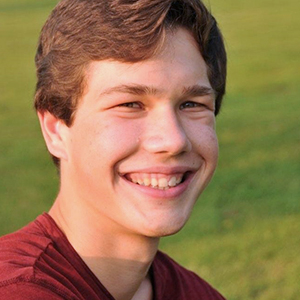
Matt Law
- Rochester Institute of Technology
Law has been interested in science for as long as he can remember. He was raised in a household that always promoted learning, exploring and asking questions. His father is a biology teacher, and his mother is an ultrasonographer, so he had excellent role models who made a living out of science and teaching. In his freshman year at RIT, he joined Hans Schmitthenner’s lab, which focuses on the synthesis of targeted molecular imaging agents for the early detection and imaging of triple-negative breast and prostate cancer. His role in the lab was to synthesize a triple-negative breast cancer–targeting peptide, 18-4, using solid phase peptide synthesis. Over the course of four years in this lab, he developed chemical and biochemical lab techniques that he will carry with him throughout his career in science. He plans to begin his graduate career in fall 2022 in the Biochemistry and Molecular Biology Program at the University of Rochester. The RIT ASBMB Student Chapter has provided him with the opportunity to meet and connect with numerous students and faculty. He is grateful for the level of cooperation and virtual collaboration they maintained throughout the COVID-19 pandemic by writing a monthly newsletter, participating in virtual trivia nights and more.
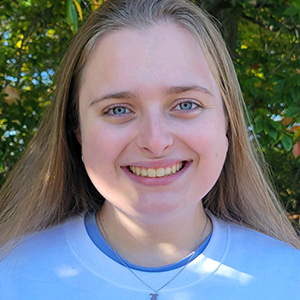
Laura Matt
- Texas Wesleyan University
Matt recently graduated with a major in biology and a minor in chemistry. She has been passionate about science since elementary school but fell in love with scientific research in summer 2021. Matt began a research project in Phillip Pelphrey’s lab to synthesize a novel oxadiazole compound. After synthesis, the project shifted from an organic chemistry to microbiology focus. During the 2021 – 2022 school year, Matt worked to characterize the antibacterial properties of that novel oxadiazole. Along with her ASBMB membership, Matt is a supplemental instructor for Biology 1 and 2, a tour guide for the university, secretary of her school’s Tri Beta chapter, and a member of the American Chemical Society. After graduation, she hopes to be accepted into an M.D./Ph.D. program and pursue a career as a physician–scientist. Matt’s hobbies include traveling (she has been to all 50 states), playing her cello, attending concerts and socializing with friends.
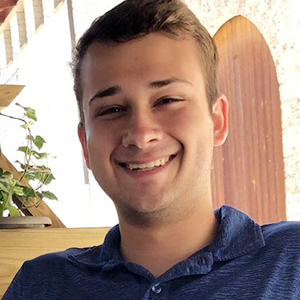
Taylor McGee
- Hampden–Sydney College
McGee always has had a special love for the biological sciences, and his research opportunities on campus have reinforced his love for the field. Whether it’s investigating melanoma, yeast or free radicals, he’s had many opportunities to grow his passion for the sciences throughout his undergraduate education. He also has been involved with the Union Philanthropic Literary Society, a debate society that dates back to 1789, making it the oldest continuously active organization of its kind in the U.S. After graduating, he wants to pursue a Ph.D. in synthetic biology, biochemistry or immunology. In his spare time, he enjoys listening to and making music, both alone and with friends. He enjoys philosophy and debate, and he has a great appreciation for community service. The ASBMB Student Chapter program has facilitated his service to others. With its support, he engaged in a high school mentorship program that helped students gain access to science opportunities and prepare themselves for undergraduate research.
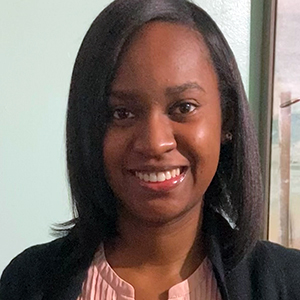
Rachel Mojica
- Manhattan College
Mojica is a rising senior majoring in biochemistry. She was born and raised in the Dominican Republic and moved to New York in December 2016. She has had an interest in science since she was in fifth grade. However, the Dominican Republic is an economically underdeveloped country where scientific research and development are not feasible, so she suppressed her interest. Once she moved to New York and learned how achievable a scientific career was, she decided to bring her interest back to light and exploit it. She’s had the opportunity to do research on biofilm formation with Sarah Wacker at Manhattan College. She also serves as the co-president of the American Chemical Society on Campus and works as a chemistry specialist in an elementary school. She is on a pre-med track with hopes of becoming a medical doctor. During her free time, she watches horror movies, reads books about self-improvement, volunteers as a sexual assault advocate and teaches herself Portuguese and German. Being part of the Student Chapter of the ASBMB has helped her become assimilated into the scientific community at her school. She also gained the challenging skill of reading scientific papers and interpreting data.
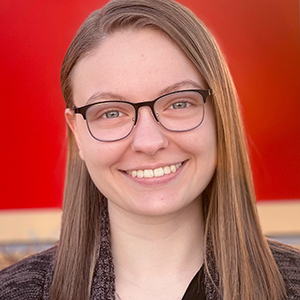
Lillian Nichols
- Otterbein University
Studying science has given Nichols the opportunity to turn her lifelong curiosity about how the world works into a career. After graduation, she will pursue a Ph.D. in physical inorganic chemistry at Ohio State University. She aspires to be involved in the ongoing effort to reduce carbon emissions and to develop sustainable energy solutions. In her free time, she loves relaxing with her two dogs, painting and playing video games.
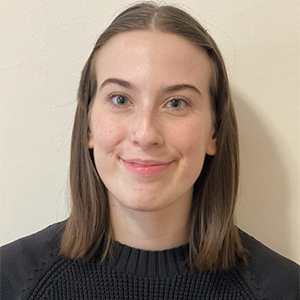
Iris Parke
- Marymount Manhattan College
Parke is a rising senior double majoring in biomedical sciences and dance. At MMC, she is involved in geochemistry research and is analyzing the chemical composition of peat moss using infrared spectroscopy. In addition, she tutors biology, chemistry and math and is vice president of the Science Society, a student organization that strives to expand science education throughout campus and the local community. Parke plans to continue being involved in science research, to go to medical school and to become a physician–scientist. Growing up, she saw her physicist father conduct research in neutrino physics and enjoyed visiting his laboratory. Being exposed to the natural sciences at a young age inspired her to study science in college and eventually to become a physician. In her free time, Parke takes classical ballet and modern dance classes around New York City with world-renowned dance teachers and choreographers.
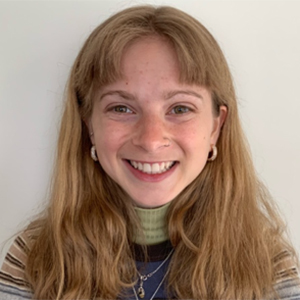
Jesse Pellman
- Wesleyan University
Pellman recently graduated as a molecular biology and biochemistry major at Wesleyan. Her passion for science started after high school when she interned at the Jerome Lipper Multiple Myeloma Center at the Dana–Farber Cancer Institute where two of her relatives had been treated. Hearing the stories of patients who had been exposed to chemicals such as Agent Orange and to radiation sparked her curiosity to understand the mechanisms by which DNA damage can initiate tumorigenesis. See pursued research on DNA replication termination in Johannes Walter’s laboratory at Harvard Medical School and later investigated the structural dynamics of DNA mismatch repair in Ishita Mukerji’s laboratory at Wesleyan. She will continue to study hematologic malignancies and seek to identify potential treatments in Ben Ebert’s laboratory at Dana–Farber. Her long-term goal is to become a physician–scientist. Outside the lab, she is a science and math tutor for students in the Middletown community, a teacher’s apprentice for biochemistry, a volunteer on the hospice unit at Middlesex Health and a mentor for Wesleyan Women in STEM. She is also an avid hiker and painter. The ASBMB has been a wonderful way for her to learn about her peers’ experiences navigating the pursuit of STEM careers.
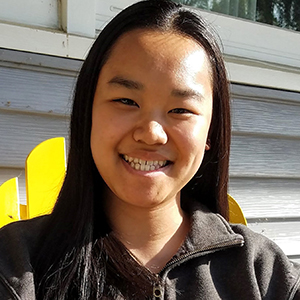
Emily Reilly
- Rochester Institute of Technology
Reilly originally joined the ASBMB to integrate herself further within the College of Science at RIT, but she found that the club did more than just help her make a difference within her college. It allowed her to increase her network of friends and peers who are also passionate about science. From volunteering with other club members at public events to social outings with everyone, she has grown closer to current friends and met extraordinary people. She also became closer with Suzanne O'Handley, her research mentor, whom she helped in her enzyme characterization lab. Reilly has done research focused on Neisseria gonorrhoeae, which broadened her abilities in the lab and deepened her love for scientific exploration. She aims to carry her passion for scientific discovery and outreach to medical school. There she aspires to make a difference in the medical and public communities she will serve.
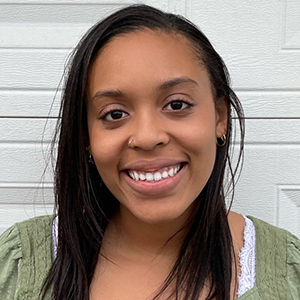
Lauryn Ridley
- St. Mary's College of Maryland
Ridley became interested in science in her seventh-grade biology class. She began working with Pamela Mertz in her junior year at St. Mary’s with research on the expression and purification of corticosterone binding globulin in E. coli for quantification. She was president of the Biomolecular Organization of St. Mary’s Students, senior advisor for the pre-medical club and a member of the offshore sailing club. Being a part of the ASBMB Student Chapter helped her to connect with peers with similar career aspirations and allowed them all to motivate and inspire each other to reach their goals. She helped organize weekly tutoring initiatives for STEM courses on campus and volunteered in local science fair competitions as a judge. She also served as a teaching assistant for general chemistry and organic chemistry. Outside of school, Ridley worked as a medical scribe and as a clinical research assistant for an orthopedic medical office. She plans to pursue a two-year postbaccalaureate Intramural Research Training Award through the National Institutes of Health and will apply to medical school June 2023. She aspires to become a physician specializing in cardiology or obstetrics/gynecology working in rural and underserved populations.
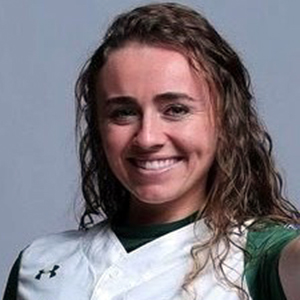
Jessie Rising
- Manhattan College
Rising recently graduated as a biology major and was a Division I softball player at Manhattan College. On campus, she was a peer mentor and tutor as well as president of the biological honor society and the ASBMB Student Chapter and vice president of the pre-health honor society Alpha Epsilon Delta. She’s been interested in science relating to the medical field for as long as she can remember. She was engaged in research for the last year in developmental biology, specifically in the neurodevelopment of zebrafish. Over the summer, she will embark on her next journey, the Thomas Jefferson University Physician Assistant Program. During her sophomore year, Rising’s brother was in a near-fatal accident in which he sustained a severe traumatic brain injury. She started an organization dedicated to redefining life’s setbacks; when members become aware of a traumatic incident such as TBI or a cancer diagnosis, they host fundraisers and donate proceeds to the family to help with medical bills and necessities.
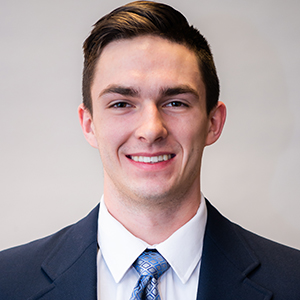
Evan Shelton
- Otterbein University
Originally from Akron, Ohio, Shelton became interested in science as a Red Cross volunteer in high school and coordinated a blood drive the summer he graduated. He continued to fuel this interest through his research project examining binding properties of two phosphodiesterase proteins. He was president of the Phi Delta Theta fraternity on campus and was a third-year resident assistant. A recent graduate, he plans to attend medical school in fall 2023 after completing a gap year to focus on research or an employment opportunity. In his free time, he enjoys playing soccer and video games with friends. The ASBMB Student Chapter at Otterbein provided a low-stress environment to learn about current topics and an opportunity for members to take a break from their busy schedules.
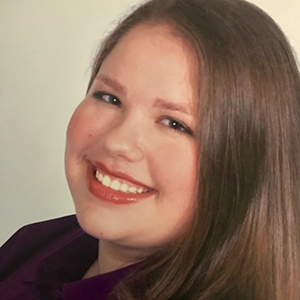
Alexandra “Lexi” Sherman
- Otterbein University
As a child, Sherman was always curious about the natural world around her. This curiosity grew as she learned more biology in her college courses. After taking a biochemistry class recommended by a professor, she felt many separate pieces come together. During the campus’ weekly BMB meetings, students and professors came together to discuss current issues and nagging questions in the biochemical world. At the first available chance, she became involved in research about the microbe Streptomyces coelicolor, which allowed her to combine her interest in microbial biology with molecular genetics techniques. Outside of research, Sherman was involved in her campus’ free food market for those that suffer from food insecurity. As a sibling of someone with special needs, she also spent much of her free time participating in central Ohio’s special needs events. In the future, she hopes to combine all of these important parts of her life to become a physician who assists in developing special needs treatment protocols for hospitals.
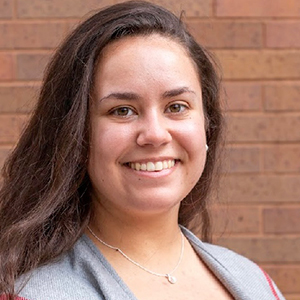
Elaina Stafford
- Rochester Institute of Technology
Stafford’s love for chemistry began in her junior year of high school when she first took a chemistry class with a teacher who was always passionate when he taught. She conducts research at RIT under Hans Schmitthenner, synthesizing dual-dye targeted molecular imaging agents for the imaging of prostate cancer. She hopes to further her knowledge of the field during a summer internship at the Roswell Park Cancer Institute in Buffalo, New York. Extracurricular activities on campus include playing in the pep band at hockey games and volunteering with RIT’s Women in Science. Hobbies are playing the clarinet, traveling, going to the gym and exploring museums. Whether it’s in the pharmaceutical industry or at a research institution, Stafford knows she wants her career to be in the lab. As a part of the ASBMB Student Chapter, she has learned from the experiences of other students as they move through college and plan their next steps. Their advice and guidance have helped her decide how she’d like to reach her own goals. She also has gained confidence by getting involved in the science community on campus and taking on new responsibilities and roles within the chapter.
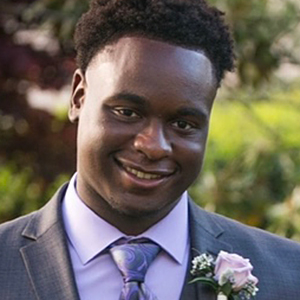
Keith Sylvestre
- Stockton University
Sylvestre is an honors student majoring in biochemistry and molecular biology with minors in behavioral neuroscience and computer information systems. He always has had an interest in science, as it was the subject that came fastest to him and provided the most enjoyment. His life experiences drove his interest in the medical field along with his passion for science, and he wishes to go to medical school after graduation. While his career goals are not set, his interests are pointed toward orthopedics; however, he is open to all different fields. He has worked under the guidance of Kelly Keenan and Tara Luke in their labs at Stockton, where he observed the effects of whitening agents on collagen and various proteins in teeth and established a library construction for next-generation sequencing to regulate fish populations through the collection of water samples. Outside of his studies, a big part of his life is the hobby of weightlifting, which he indulges in five or six times a week.
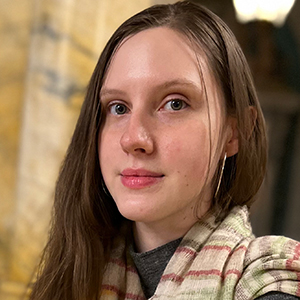
Antonieta van den Berg Monsalve
- Otterbein University
Whether it’s behind a benchtop or a computer screen, van den Berg Monsalve has made research a focal part of her life since her first biomedical class. Her undergraduate research with Simon K. Lawrance studied the polymorphism of South African penguin major histocompatibility complex class II genes. The goal was to assess the overall genetic diversity by sequencing MHC alleles. In 2021, she joined Vincent Hilser’s lab for a 10-week fellowship. There she worked with computational programs to identify possible thermodynamic epitopes of various viral proteins. Spending time with her peers at Otterbein’s ASBMB Student Chapter events became more precious with the pandemic. Since then, fostering a sense of community became a weekly goal during her last two years as an undergraduate. After graduating, she hopes to gain more research and work experience in preparation for graduate school.
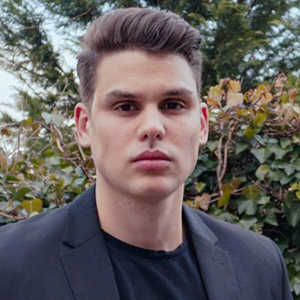
Luis Vargas
- Manhattan College
Vargas’ interest in science began when he was 8 years old, growing up in Cuba. At the time, his aunt was at the top of her class as a medical student and told stories about what she’d learned every night at dinner, such as how the heart consists of four chambers. This made Vargas reevaluate how complex human beings truly are. Since then, he has worked on two research projects. One involved looking at how the diet of salamanders differs depending on whether they live in a rural or urban habitat to understand key aspects of their behavior. He presented his findings at the Jasper Summer Research Scholars fellowship conference. The other project studied the role of the sodium-potassium pump Kv 2.1 in the development of zebrafish hindbrain. In addition to research, Vargas took on roles to contribute to the sense of community on campus. As the vice president of the Psychology Club, he helped ensure the student-run organization remained active and of interest to students. He helped organize a food and clothing drive that focused on donating essentials to the underserved. After graduation, he plans to attend medical school. His goal is to become a neurosurgeon who also performs research not only to heal the sick but also to make sure the healthy stay that way.
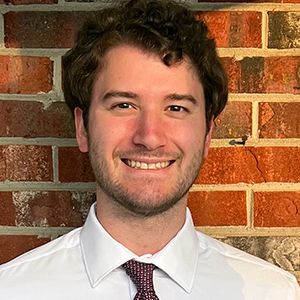
Jacob Wellek
- St. Mary's College of Maryland
In third grade, Wellek and his best friend did a small experiment for their school’s science fair. They submerged an egg in vinegar for a week, and the eggshell vanished. Wellek was too young to understand the science behind the experiment, but it captivated him. He woke up early every day to check the eggshell, patiently observing small changes over time. This started his passion for science. Beginning in the summer of 2021, he researched the cadmium-induced protein expression in Chesapeake Bay oysters. His project aimed to learn more about the biological processes within oysters and to gain a different perspective on the effects of pollution on aquaculture. While he enjoys environmental toxicology, he wants his research career to focus on health. He plans to do cancer research at the National Institutes of Health through the postbaccalaureate Intramural Research Training Award program. This will lead to his career goal of becoming a health care professional specializing in primary care or anesthesiology. He was the vice president of the Biomolecular Organization of St. Mary’s Students, which involved weekly tutoring in various STEM courses.
